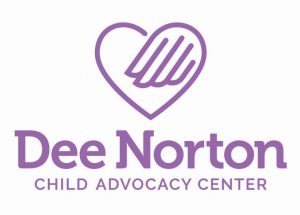Dee Norton Child Advocacy Center offers five strategies to help children identify ‘grooming’ and prevent sexual abuse
December 16, 2021Dee Norton Child Advocacy Center, the region’s leading resource to prevent abuse, protect children and heal families, offers suggestions and best practices to help children identify and avoid grooming. By definition, “grooming” is a tactic used to gain children’s trust, gain access to them, and desensitize them to behaviors that might otherwise make them feel uncomfortable. These grooming behaviors can be small, subtle, and often hard to spot, and children may not be aware of these behaviors until it is too late. For example, an offender may hug a child longer than normal, or may ask a child to hug him/her even if the child says they don’t want to. It can be challenging for parents because our society often encourages children to hug relatives—even if they are not comfortable doing so. Honoring children’s body boundaries is important, so they know they can say “no” to grooming behaviors. Recent news coverage centered on allegations of ‘grooming’ young girls illustrates the importance of having these difficult conversations with our children.
“‘Grooming’ desensitizes children to crossed boundaries. Abusers slowly push the boundaries more and more, so that children are often unaware, or too scared to talk about the abuse,” says Beverly Hutchison, Executive Director at Dee Norton. “Parents and guardians are crucial to helping children identify and prevent grooming behaviors so we can better protect our children. Grooming is an all too real issue in our world and community, so we encourage families to have open conversations early and often with their children.”
Dee Norton offers five strategies to help identify and prevent grooming:
Start the discussion:
1. Create a safe and open line of communication:
Make frequent efforts to give your child opportunities to communicate openly and freely with you. Ensure that you are actively listening so when they speak, they know their thoughts and concerns will not be minimalized or get them in trouble. Emphasize that no matter how uncomfortable the subject might be, you are there to listen and trust them.
2. Talk about “body boundaries,” early and often:
Starting as young as two years old, help your children understand their body parts, which body parts are private, and who can touch them. Doing this will give them power over their own bodies and become aware of what is appropriate or may be inappropriate touching. If your child is older, it is never too late to have conversations about body boundaries.
3. Teach them to report any treats or gifts they are given:
Let your child know that they should immediately tell you when they receive a gift from any adult, including teachers, coaches, family members, friends’ parents, etc. It is helpful to distinguish between “secrets” and “surprises”—surprises like a birthday party are kept for a short period of time, while secrets are not to be kept from you as their parent.
4. Teach them to report whenever they are alone with an adult:
No matter who the adult may be, including extended family members, it is important your child makes you aware of the interaction, as those who utilize grooming are often known to the family or child.
5. Trust your instinct, trust yourself, and trust your child:
Do not be afraid to talk to your child if you feel that something is off or wrong. If your child has trouble talking about something, sit down with them and patiently help them through it. Push through any feelings of nerves or embarrassment you might have and bring up the conversation with your children. The more they are aware of grooming and grooming behaviors, the more likely they will work with you to identify them before it happens.
As a Children’s Advocacy Center with core values of Compassion, Collaboration, and Commitment to Excellence, Dee Norton encourages the community to have these conversations to better protect our children.
To learn more about how to help communicate to children in the wake of current events, visit www.deenortoncenter.org.
About Dee Norton Child Advocacy Center
The Dee Norton Child Advocacy Center is the region’s leading resource to prevent abuse, protect children and heal families. Primary services include forensic interviews, medical examinations and mental health assessments as well as immediate support and coordination. The center also provides evidence-based therapy to child victims and their families. For more information, visit www.deenortoncenter.org.

















